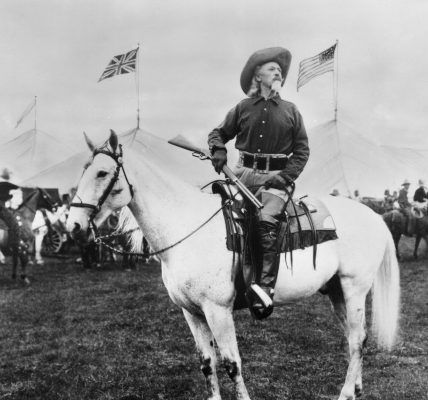From the Shetlands to the Scilly Isles this new book explores Britain's islands
We are, of course, an island nation, but you could also say we are a nation of islands given the multitude of rocky outcrops dotted around our coastline.
The British Isles includes around 194 inhabited islands (out of a total of more than 6,000) ranging from popular holiday hotspots to remote havens where humans rarely venture.
It’s a subject ripe for exploring which is exactly what Sheffield-based travel writer Peter Naldrett has done in his new book – Treasured Islands – a guide to more than 200 of the most interesting islands around Britain
The book has been three years in the making and the idea for it came from his previous book which was all about the British coastline. “During my research for that one, I’d come across harbours and ports and see ferries going off to these distant places and it seemed like a natural extension to start exploring our islands.”
He had planned to go to all of them, but a few trips had to be postponed or shelved as the pandemic put the kibosh on them. As Peter puts it: “2020 wasn’t a great time to be a travel writer.”
It meant that for some places he had to interview locals over the phone and do his research without actually setting foot there. He did, though, get to the vast majority he writes about. And, as he says, there are far more islands in Britain than you probably realise, and each has a story to tell.
His first port of call were the Islands of Furness, in Cumbria. “I’d been to the Lake District plenty of times but I wasn’t aware of these islands before I started this book.
“They’re a small group of islands and one of them is joined to the mainland by a causeway and the other two you have to get a little boat to. There’s no ferry timetable, you just have to wait and hope that the boat will turn up – though there’s a number to ring so you can find out. One of the islands is called Piel Island. There’s a pub and a castle there and it’s just in the middle of nowhere.”
We often think of islands as being off the coast, but there are plenty of inland islands, too, and Peter also visited several in the Lake District. “This involved hiring kayaks and going out on Derwentwater or Windermere.”
It also involved digging up nuggets of information as he went along. “You often find some literary links, like the fact that Swallows and Amazons was shaped by those Lake District islands, and Beatrix Potter wrote a lot of stories about them.”
The Thames is also home to a series of inland islands, including the strangely named Eel Pie Island. “It was really big in the 60s,” says Peter. “They had concerts and the Rolling Stones performed there and today there’s a commune of artists that live there and every year they open it up for a few days and you can go and look at their work, so there’s this artistic legacy that goes back to the Swinging Sixties.”
Another inland island, Kelham Island, is a little closer to home in the centre of Sheffield. “It’s been listed as one of the coolest places to live in Europe by one survey I read. The transformation of the islands and the area around it has been phenomenal in the time I’ve been living in Sheffield. If you go back 20 years or so it was a red light district and now it’s one of the hippest places with desirable apartments and shops and cool places to eat and drink.”
Peter says he now has a greater appreciation for our islands and their communities. “It’s not necessarily about going to the coast and heading out on a boat. There’s an element of that, but there’s also a lot of places closer to home, too. And what I have learned going to these islands and speaking to the people who live there, is they all have one thing in common in that they’re an island, but as far as traditions and the communities go they are often vastly different with their own customs and ways of life.”
Like, for instance, up in Scotland. “There’s one island in Shetland where just one family lives and they run a business where they have this rare breed of sheep and they sell the yarn.”
The number of islands can also change over time with Spurn, off US’s coast, the latest addition. “There were a couple of really bad storms a few years ago and it’s become a tidal island, and at high tide it gets completely cut off. So it’s officially the newest island.”
Many have interesting, or unusual, links. “In the Outer Hebrides there’s an island called Eriskay which is famous for its links with the film Whisky Galore!, and there’s a pub up there named the real life boat that ran aground, the Politician. It has one of the bottles of whiskey on display which apparently if you open tastes horrible because of all the salt that’s got in.”
Eriskay also has a footballing claim to fame as it’s been named by Fifa as one of the best places to play football and one of the most unusual pitches.
“If you look at the football pitch there it’s got a great big slope and there are rocks in it. One of the corner flags is three or four feet higher than the rest of the pitch. It’s the only conceivable place where you could have a football pitch and it’s now seen as one of the most beautiful places to play the beautiful game. I spoke to the captain of the football team and I think there’s something like three teams there and they all play each other about 15 times!”
One of the places that most impressed him during his travels was Bryher in the Isles of Scilly. To get there you take a ferry from Penzance on what is a notoriously choppy journey. “The boat’s called the Scillonian but it’s nicknamed ‘the vomit comet,’” jokes Peter.
But once there, he says it’s like visiting another world. “The Scilly Isles have their own microclimate so the weather is lovely a lot of the time and you find gardens there where you can grow tropical plants. As a family we go camping every year but the experience on Bryher was like nothing else. You can’t take your car with you so just take what you can carry. You’re so removed from everything which makes it really quite special and you do feel like you’ve gone abroad.”
Lindisfarne is another favourite. “There’s something special about staying on the island when the tide comes in because a lot of the workers leave. The closing times for the cafe change every day because of the tide and the workers go and you get that feeling of being in a very small place shut off from the mainland.”
Our islands, he says, are an important part of our identity. “Some are important historically, like Lindisfarne where the Vikings first landed, and some are really important economically. Up in Orkney there’s a tiny island and it’s basically an oil terminal, and people commute from all the surrounding islands. A lot of them also depend on tourism and that will have taken a big hit over the past year.”
Hopefully, though, 2021 might prove to be a bumper year for tourism as people explore the many treasures that can be found without having to travel halfway around the world.










